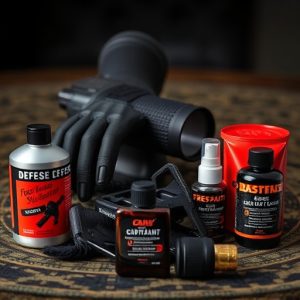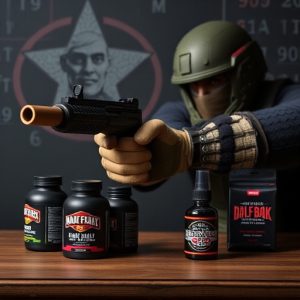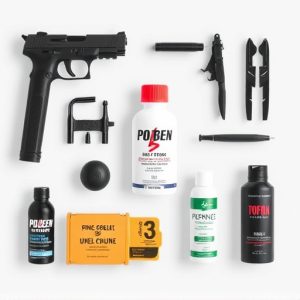Exploring the Impact and Options of Personal Defense Products in Self-Defense Strategies
Personal defense products have become key components in modern self-defense strategies, offering in…….
Personal defense products have become key components in modern self-defense strategies, offering individuals a variety of non-lethal options to protect themselves. These tools are designed to temporarily incapacitate potential attackers while avoiding serious harm, serving as both physical barriers and psychological deterrents. Ranging from everyday carry pepper spray models to more potent devices, these products are user-friendly, compliant with legal standards, and come with advanced features like LED lights and audible alarms for enhanced functionality and safety. They can also act as effective deterrents simply by their presence, potentially preventing attacks. Manufacturers continuously innovate, improving the effectiveness of these personal defense tools in various risky scenarios. It's important to understand their operation, legal use, and safety considerations to maximize their protective benefits. Additionally, the ethical use of less lethal weapons like pepper spray and stun guns requires careful judgment, proper training, and adherence to legal standards to ensure they are used responsibly within society's framework of laws and regulations. The market for personal defense products is diverse, including items like UV-marking sprays and personal alarm systems, as well as defense apps that provide audible alarms, location sharing, and emergency service contacts. Users should always be informed about local laws to ensure their chosen self-defense tools are legally permissible and appropriate for their specific needs.
In an era where personal safety remains paramount, the discussion around self-defense measures has gained significant traction. This article delves into the pivotal role of personal defense products within contemporary self-defense strategies. It examines the balance between efficacy and ethical considerations in employing less lethal weapons for personal safety. Furthermore, it serves as a guide to the plethora of personal defense products available today, ensuring readers are well-informed on their options for protection. Key terms like “personal defense products” will be integrated throughout to align with search engine optimization objectives and provide valuable insights for those seeking to safeguard themselves in various situations.
Understanding the Role of Personal Defense Products in Modern Self-Defense Strategies
In contemporary self-defense strategies, personal defense products have become an integral component, offering individuals a range of options to deter potential threats and protect themselves in various situations. The evolution of these products reflects a growing recognition of the need for effective, non-lethal solutions that can be employed with ease when facing an adversary. From pepper spray, which temporarily incapacitates an attacker with its irritating effects, to stun guns that deliver a high-voltage shock without causing long-term harm, these tools are specifically designed to provide a deterrent without resorting to deadly force. Their compact and inconspicuous designs also allow users to carry them legally in many jurisdictions, ensuring readiness for unexpected confrontations. Users can select from a variety of personal defense products tailored to their specific needs, including keychain models for everyday carry or more powerful devices for enhanced protection. Understanding the legal implications, proper usage, and safety protocols associated with these products is paramount for effective self-defense.
The efficacy of personal defense products in modern self-defense strategies lies not only in their ability to incapacitate an attacker but also in their role as a psychological deterrent. The presence of these devices can signal to potential assailants that the intended victim is prepared and capable of defending themselves, which may be enough to discourage criminal activity altogether. Manufacturers continuously innovate to improve the performance and reliability of these products, incorporating features such as LED lights for improved visibility or integrated alarms to attract attention. As a result, personal defense products are becoming increasingly sophisticated, offering users more options than ever before to enhance their safety and security in a variety of potentially dangerous situations.
The Efficacy and Ethical Considerations of Less Lethal Weapons for Personal Safety
When considering personal safety, less lephthal weapons have emerged as a crucial component in the arsenal of personal defense products. These tools are specifically designed to incapacitate an attacker without causing permanent injury or death. Their efficacy lies in their ability to deliver a range of effects from temporary pain and disorientation to more precise incapacitation, depending on the scenario and the weapon used. For instance, pepper spray can temporarily blind an assailant with a debilitating cloud of irritants, while stun guns deliver a non-lethal electric shock that overpowers an attacker without long-term health consequences. The choice of a less lethal weapon should be based on factors such as the user’s physical abilities, the legal framework in their jurisdiction, and the specific context in which they might be used.
The ethical considerations surrounding the use of less lethal weapons for personal defense are multifaceted. On one hand, these weapons offer a means to protect oneself without resorting to deadly force, thus preserving human life. On the other hand, there is an inherent responsibility that comes with their use. Users must be trained in their application to avoid misuse or unnecessary harm. Moreover, the accessibility of personal defense products must be carefully managed to prevent them from falling into the wrong hands. Ethical use also involves understanding the legal implications and ensuring compliance with local laws and regulations. As such, the deployment of less lethal weapons should be a thoughtful decision, taking into account both the immediate safety needs and the broader societal implications.
A Comprehensive Guide to Various Types of Personal Defense Products Available Today
When considering personal defense products, it’s crucial to evaluate a range of options that balance effectiveness with legal constraints and ethical considerations. Pepper spray and stun guns are among the most popular non-lethal self-defense tools due to their accessibility and ease of use. Pepper spray, also known as OC (Oleoresin Capsicum) spray, temporarily impairs an attacker’s vision and causes intense irritation upon contact with the face or eyes, providing a significant deterrent without causing permanent harm. Stun guns deliver a high-voltage electric shock, incapacitating an assailant by disrupting muscle control. Both devices are designed to be compact and user-friendly, allowing for quick deployment in critical situations.
For those seeking more sophisticated personal defense products, there are options like personal alarm systems that emit a loud sound to draw attention and deter aggressors, and personal defense sprays with UV marking dyes to aid law enforcement in identifying and apprehending attackers. Additionally, personal defense apps can be used in conjunction with physical tools; these apps provide features such as loud alarms, location sharing, and quick access to emergency services. It’s important for individuals to familiarize themselves with the laws governing the possession and use of self-defense products in their jurisdiction, ensuring they choose options that are both legally permissible and suited to their personal defense needs.


